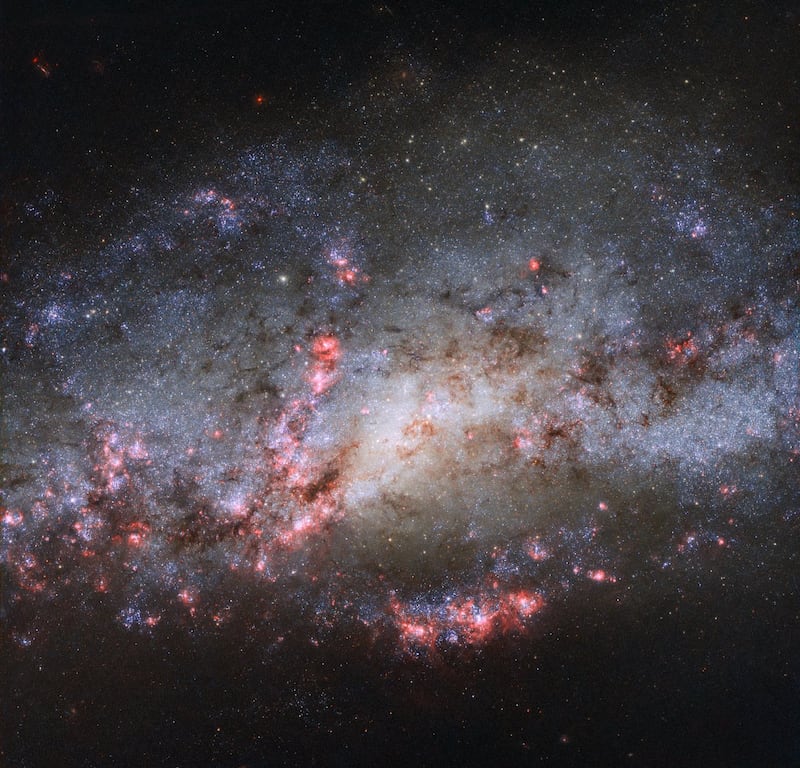The Hubble Space Telescope has captured a “galactic spectacle” showing regions of intense star formation triggered by a cosmic-scale collision – otherwise known as a starburst.
The image shows the galaxies NGC 4490 and its smaller neighbour, NGC 4485, reacting under the relentless pull of gravity.
Over millions of years the mutual gravitational attraction between the two galaxies has dragged them together “in a swirling crush of stars, gas and dust”.
And while the most intense period has already come to an end – with the galaxies moving through each other, untangling themselves, and separating – within a few billion years, gravity is likely to bring the two galaxies together again.

NGC 4490 and NGC 4485 form the system Arp 269, and are 24 million light-years from Earth. NGC 4490 was once a spiral galaxy similar to the Milky Way, but this interaction has left it stretched at the edges.
The cosmic collision that brought the two galaxies together has created a hotbed for star creation, with the pink pockets of light showing dense clouds of ionised hydrogen glowing as they’re illuminated with ultraviolet light from nearby young, hot stars. The new activity has resulted in NGC 4490 recently being classified as a starburst galaxy.
But while this galaxy is home to an array of new stars, several supernovae have also been spotted here over the past few decades.
Gravity is fairly weak compared with other fundamental forces in the universe, according to the Hubble Telescope team, but has the ability to influence over huge distances – and the galaxy’s “warped” appearance is an example of gravity’s pull.








